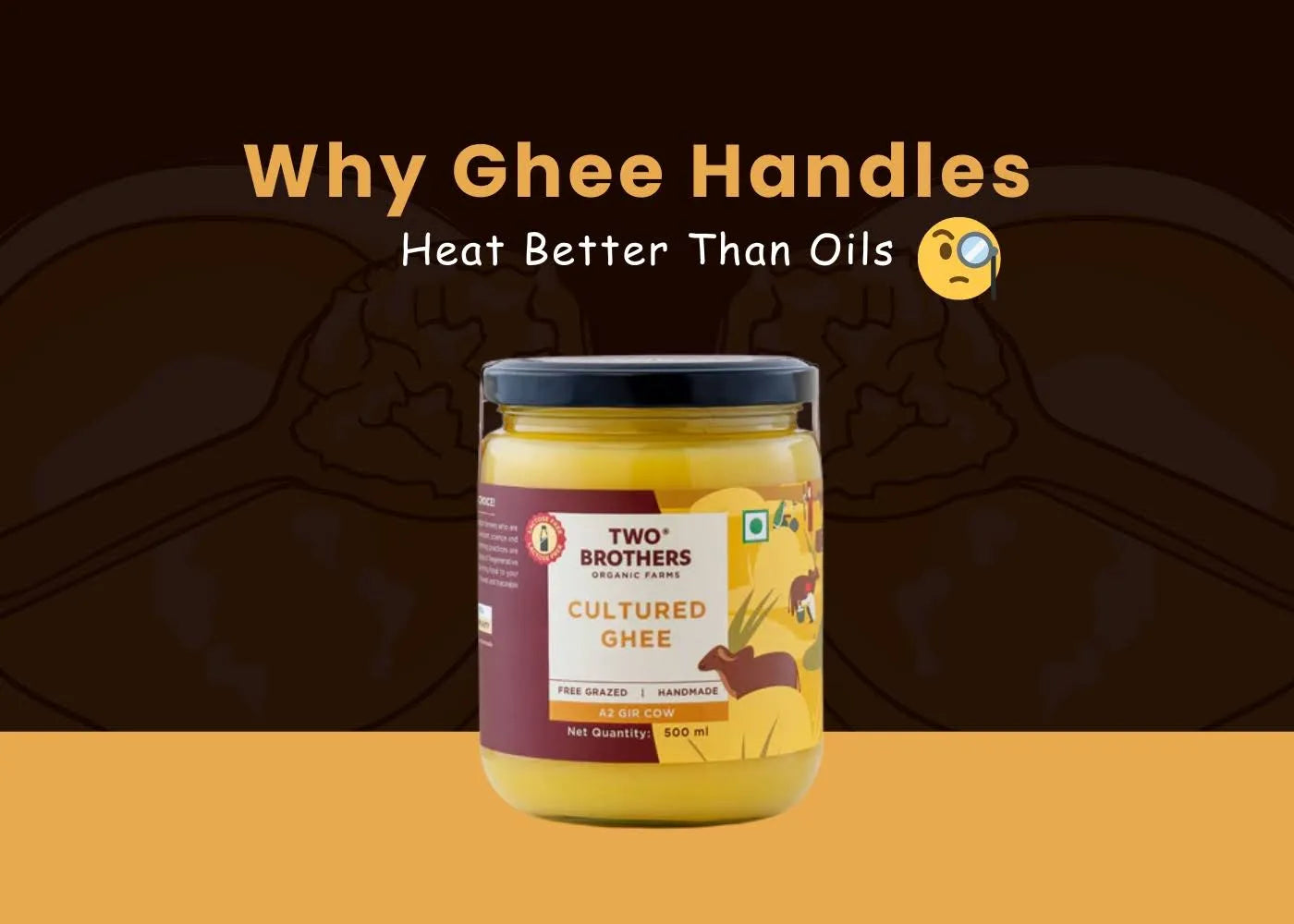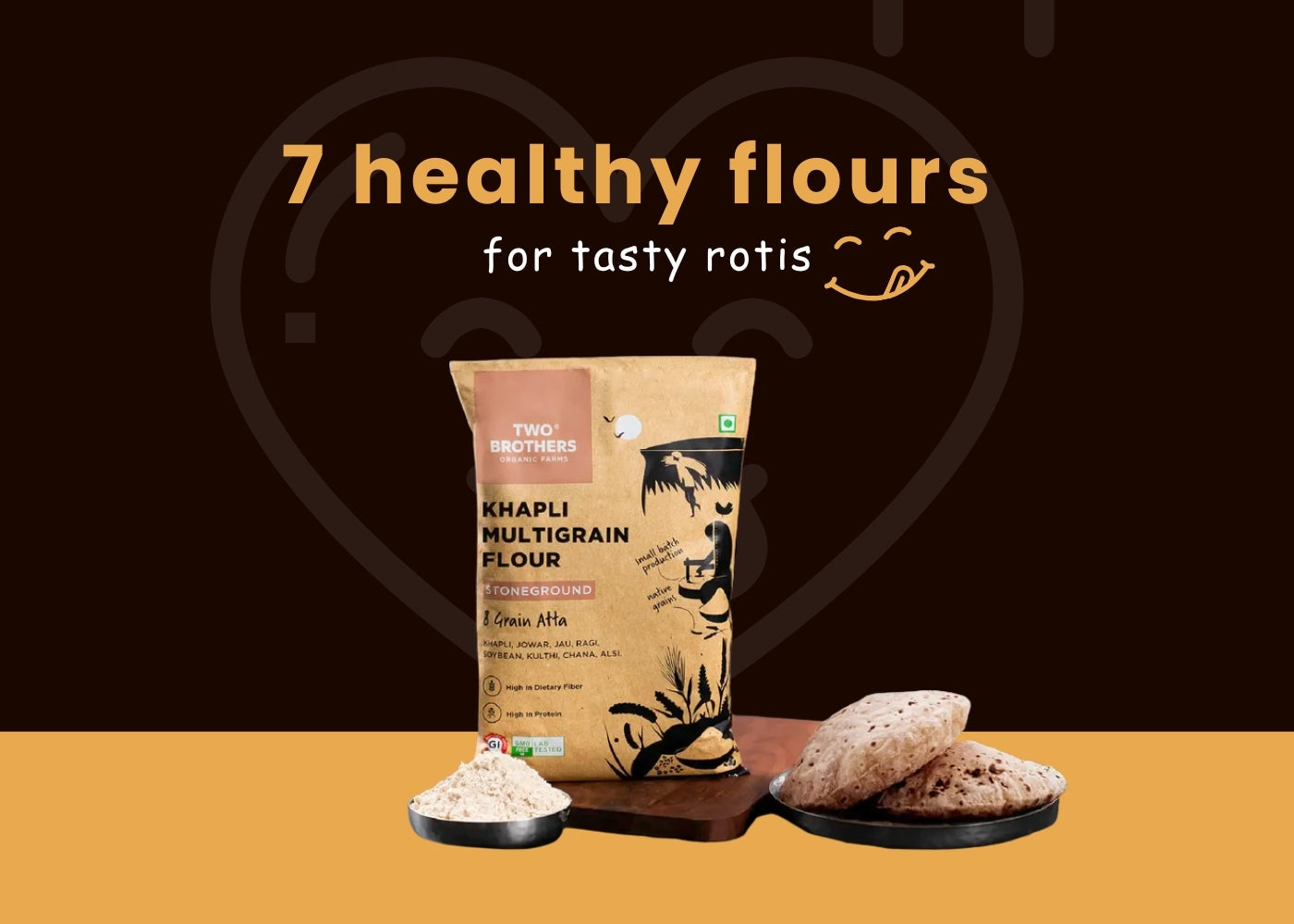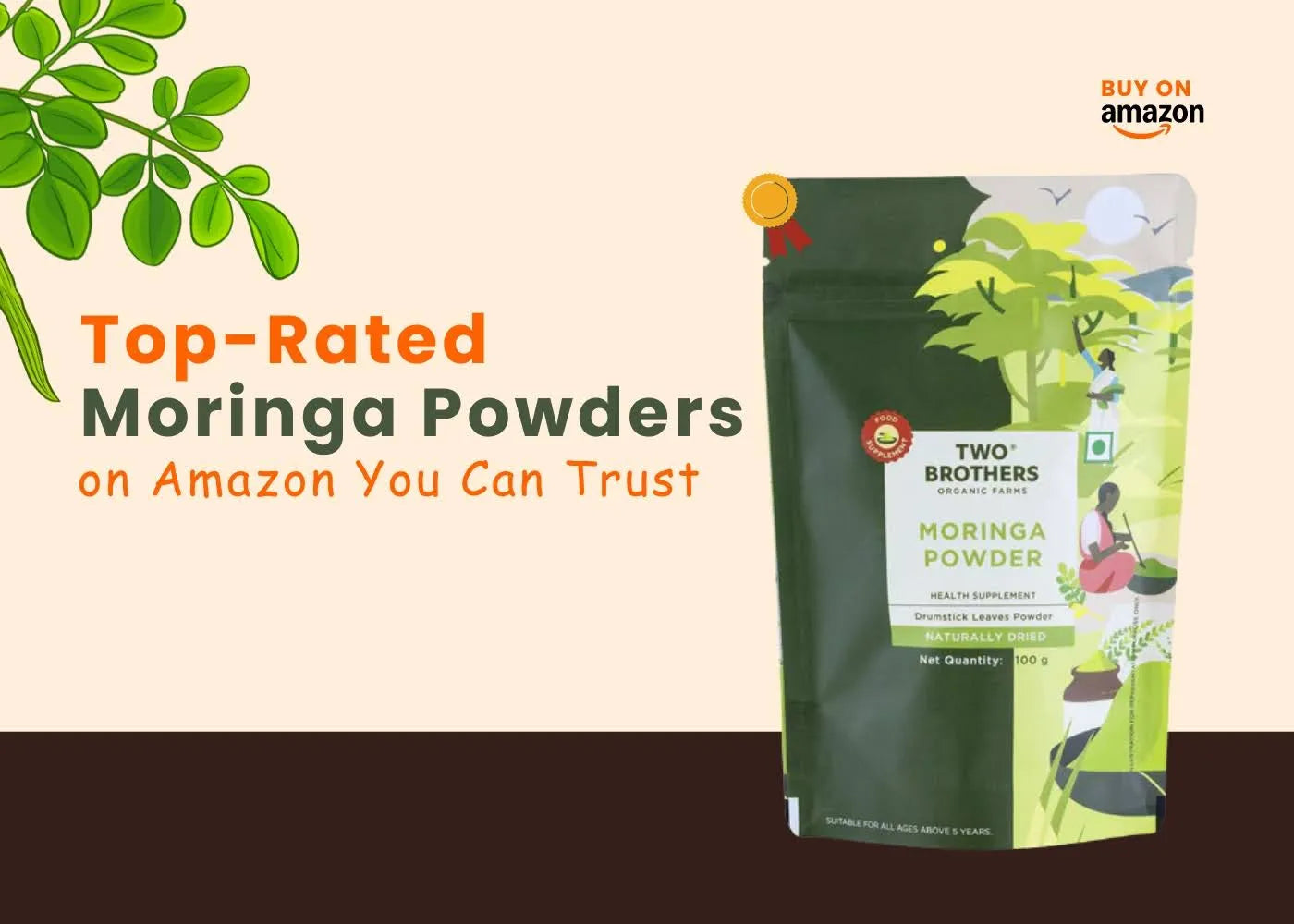You're standing in the grocery aisle, holding a bag that promises ancient wholeness, stone-ground Khapli flour, straight from the heartland of India. The label whispers heritage. The price tag whispers caution. And somewhere inside you, a quiet question hums: Is this real?
You're not alone in wondering. As the world reawakens to the wisdom of heirloom grains, authentic Khapli has become more than flour; it's become a movement. But with popularity comes pretense. And in the rush to meet demand, not every bag lives up to its golden promise.
This is your guide, a companion on your journey back to purity, a map to help you separate the sacred from the synthetic. Because you deserve flour that honors your body, your choices, and the ancient grains that have nourished generations before you.
What is Khapli Flour and Why Does Authenticity Matter?
Khapli flour, also known as Emmer wheat flour, is an ancient grain variety that predates modern wheat by thousands of years. Unlike the hybrid wheat most of us grew up eating, Khapli (scientifically known as Triticum dicoccum) remains unmodified, closer to the earth, closer to the original blueprint of nutrition.
Authentic Khapli is:
- Naturally lower in gluten
- Higher in fiber and protein
- Rich in B vitamins, iron, and magnesium
- Stone-ground to preserve the bran, germ, and nutrients
But here's the catch: fake flour detection isn't always straightforward. With diluted blends, modern wheat masquerading as ancient grain, and heavily refined impostors flooding the market, knowing how to spot the real deal is essential.
The Growing Problem: Why Fake Khapli Flour Exists
The demand for ancient grains has skyrocketed. Health-conscious consumers like you are searching for cleaner, more nourishing alternatives. And where there's demand, there's sometimes deception.
Some brands cut corners by:
- Mixing Khapli with cheaper, modern wheat flour
- Over-processing the grain, stripping away its nutrients
- Using refined flours and simply labeling them "Khapli"
- Adding chalk powder, excess bran, or other adulterants to increase volume
The result? A product that looks like Khapli, costs like Khapli, but delivers none of the benefits.
Visual and Sensory Tests: Trust Your Senses
Your senses are your first line of defense. Authentic Khapli has a distinct personality, one that speaks before you even cook with it.
1. Color: The Honest Hue
Real Khapli flour is light brown or off-white, never bleached, never pure white. The grains themselves are long and reddish-brown. If your flour looks too pale, too refined, or unnaturally uniform, it may be adulterated with maida (refined flour) or modern wheat.
2. Texture: The Rustic Touch
Run your fingers through it. Authentic Khapli feels coarser, more rustic, like the earth itself has been gently ground between stones. If it's silky smooth and fine like cake flour, it's been over-processed or blended with refined flour.
3. Aroma: The Warm Whisper
Bring the flour close. Breathe it in. Genuine Khapli flour carries a warm, nutty, and earthy aroma, a scent that speaks of sun-dried grains and slow, mindful milling. If it smells bland, chemical, or rancid, walk away.
4. Dough Consistency: The Honest Feel
When you knead Khapli dough, it requires slightly less water than regular atta. It feels soft, pliable, but less stretchy because it's naturally lower in gluten. If your dough behaves exactly like modern wheat, question its origins.
Packaging and Sourcing: What the Label Should Tell You
A bag of flour can tell you a story, if you know what to read.
|
What to Look For |
Why It Matters |
|
"Emmer Wheat" or "Triticum dicoccum" |
Confirms the grain is authentic Khapli, not hybrid wheat |
|
"Stone-ground" or "Slow-milled" |
Preserves nutrients, texture, and flavor |
|
Organic or Non-GMO Certification |
Ensures purity and ethical farming practices |
|
Source Region |
Authentic Khapli is often grown in Maharashtra or Karnataka |
|
Brand Transparency |
Reputable brands provide detailed sourcing information |
If a brand is vague, generic, or suspiciously cheap, trust your instincts. Fake flour detection often begins with reading between the lines, or noticing what's missing.
At Two Brothers Organic Farms, transparency isn't an option; it's a promise. Every bag of Khapli Multigrain Atta comes with a story: where it was grown, how it was milled, and why it matters.
Simple Home Tests for Purity
You don't need a lab to spot adulteration. Here are two easy, time-tested methods to verify your flour at home.
The Water Test
- Fill a glass with water.
- Sprinkle a spoonful of Khapli flour on the surface.
- Observe what happens.
What to look for:
- Pure Khapli flour will float slowly, with some natural bran particles on top.
- If a large amount of white residue sinks immediately or the water turns milky, it may be adulterated with chalk powder or excess starch.
The Lemon Test (Chalk Detection)
- Place a small amount of flour on a plate.
- Add a few drops of lemon juice.
- Watch for a reaction.
What to look for:
- No reaction = Pure flour.
- Bubbling or fizzing = Likely adulterated with chalk powder.
These tests aren't foolproof, but they're powerful tools for fake flour detection in your own kitchen.
Why Stone-Ground Milling Matters
Not all milling methods are created equal. Industrial milling uses high-speed steel rollers that generate heat, stripping away the bran, germ, and much of the nutrition. What's left is convenient but hollow.
Stone-ground milling, on the other hand, is slow, cool, and intentional. It preserves:
- The bran (fiber-rich outer layer)
- The germ (nutrient-dense core)
- The natural oils, vitamins, and minerals
This is why authentic Khapli tastes richer, feels coarser, and nourishes deeper. It's flour that remembers where it came from.
As noted in a Times of India article, "unlike normal wheat, Khapli wheat is milled using traditional methods, washing, sun-drying, and stone-grinding, so it keeps the germ and nutrients of the wheat intact and weakens the gluten."
Learn more about the difference between Khapli Wheat Flour and Regular Wheat to understand why milling matters.
Red Flags: When to Walk Away
Here are warning signs that should make you question a product's authenticity:
- Too cheap to be true: Authentic, stone-ground, organic Khapli costs more, because it's worth more.
- Generic labeling: No mention of "Emmer wheat," source region, or milling method.
- Pure white color: Real Khapli is never bleached.
- Chemical or bland smell: Fresh, authentic flour smells earthy and nutty.
- Overly smooth texture: Ancient grains are rustic, not refined.
- No brand transparency: Reputable brands share their story and their sourcing.
The Two Brothers Difference: Authentic Khapli You Can Trust
At Two Brothers Organic Farms, we don't just sell flour, we steward a legacy. Our Khapli Multigrain Atta is:
- Made from 100% pure Emmer wheat
- Stone-ground to preserve nutrients
- Organic and GMO-free
- Sourced directly from trusted Indian farms
- Minimally processed to honor the grain's natural integrity
We believe food should be honest. And honesty begins with the seed.
Explore our commitment to ancient grains for weight management and discover how Multigrain Khapli Atta supports the gluten-conscious community.
How to Use Authentic Khapli Flour in Your Kitchen
Once you've found the real deal, here's how to make the most of it:
- Rotis and chapatis: Soft, nutty, and deeply satisfying
- Whole-grain bread: Dense, flavorful, and nourishing
- Pancakes and dosas: A wholesome twist on breakfast classics
- Baked goods: Cookies, muffins, and cakes with rustic charm
- Thickening agent: For soups, stews, and gravies
Khapli's lower gluten content means dough may feel less elastic, but that's not a flaw. It's a feature. It's the flour being itself.
Key Characteristics of Authentic Khapli Flour at a Glance
Here's a quick-reference guide to help you spot the real thing:
✔ Color: Light brown or off-white
✔ Texture: Coarser, rustic
✔ Aroma: Warm, nutty, earthy
✔ Dough: Soft, pliable, less stretchy
✔ Milling: Stone-ground or slow-milled
✔ Packaging: Transparent about source and process
✔ Price: Reflects quality, not cutting corners
✔ Grain: Emmer wheat (Triticum dicoccum)
Choose Flour That Honors Your Body and the Earth
Spotting authentic Khapli isn't just about avoiding fraud; it's about reclaiming your relationship with food. It's about choosing flour that tells the truth: in its color, its texture, its aroma, and its nourishment.
When you hold a bag of real Khapli flour, you're holding a piece of history, a grain that has survived millennia because it was never meant to be tampered with. It's food the way it was meant to be: whole, honest, and alive.
Ready to experience the real thing? Discover the wholesome goodness of Two Brothers Khapli Multigrain Atta, where authenticity isn't a claim, it's a promise.
FAQs
1. Is Khapli flour completely gluten-free?
No, Khapli flour is not gluten-free, but it contains significantly less gluten than modern wheat, making it easier to digest for some people. It's not suitable for those with celiac disease, but it may be gentler for those with mild gluten sensitivities.
2. How can I tell if my Khapli flour is adulterated?
Use the water test and lemon test described above. Also, check for color (should be light brown), texture (coarser), and aroma (nutty and earthy). If it smells bland or looks too refined, it may be fake.
3. Why is authentic Khapli flour more expensive?
Because it's grown organically, milled slowly using traditional methods, and sourced from heirloom grains that yield less than hybrid wheat. Quality, purity, and tradition come at a cost, but they're worth it.
4. Can I use Khapli flour for all my baking needs?
Yes, but expect slightly different results due to lower gluten content. Khapli works beautifully for rotis, bread, pancakes, and baked goods; just adjust your expectations for texture and rise.
5. Where can I buy authentic Khapli flour in the USA?
Look for reputable brands with transparent sourcing and certifications. Two Brothers Organic Farms ships authentic, stone-ground Khapli flour across the USA.
6. How should I store Khapli flour to keep it fresh?
Store it in an airtight container in a cool, dry place. Because it's minimally processed and retains natural oils, it's best used within 2-3 months or refrigerated for longer freshness.









